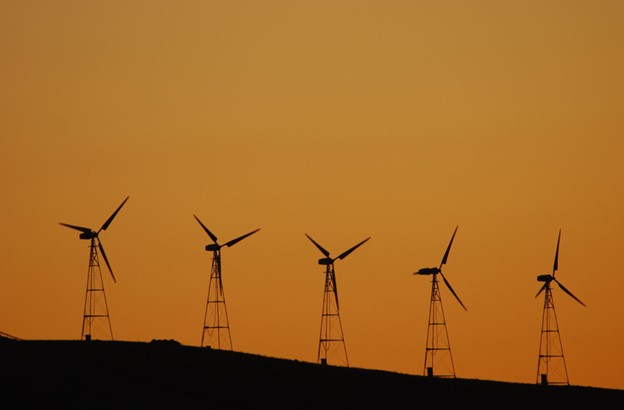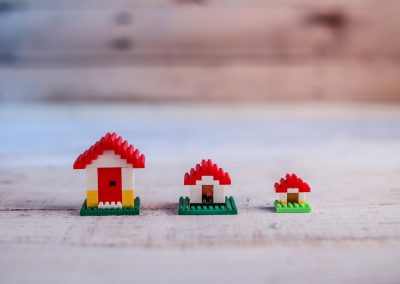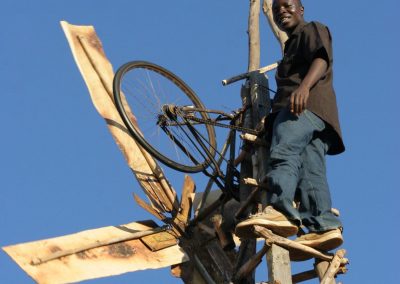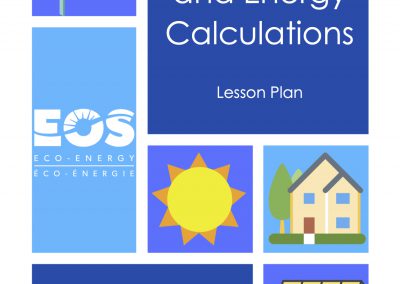Overview
Imagine the power of a young boy’s knowledge, creativity and determination changing a community forever! Learners will be inspired to put their own learning and imagination into action after reading the true story of “The Boy Who Harnessed the Wind”. This guide provides pre and post reading activities, as well as a wind energy building challenge!
NB Curricular Connections
English Language Arts (K-2 & 3-5)
- Strand: Reading – Big Idea: Reading Comprehension
Explore Your World (K-2)
- Strand: Literacies and Communication – Big Idea: Communicative Practices – Skill Descriptor: Explore multiple languages.
- Strand: Play and Playfulness – Big Idea: Exploration and Problem Solving
- Strand: Play and Playfulness – Big Idea: Play and Inquiry
Science (3-5)
- Strand: Learning and Living Sustainably – Big Idea: Responsible and Sustainable Application
What You’ll Need
- Copy of “The Boy Who Harnessed the Wind” by: William Kamkwamba & Bryan Mealer (Available on Sora)
- Chart Paper
- Fan (for testing windmills)
- Pencils
- Maker Space Materials: recyclables, paper, cut up sponges, tape, scissors, newspaper, straws, fasteners, unsharpened pencils, etc. (see activity attached for more suggestions)
- Smart Board/Projector
- Activity Guide (see attached PDF)
Instructions
Pre-Reading
- Discussion: On a piece of chart paper, print the word – Wind. Ask students to describe what they first think about when they hear this word. Write down their responses.
- Context: Using a world map or a website like Google Earth to show students the country of Malawi. Talk about the countries around it, how it is a land-locked nation, as well as how far away it is from the ocean. Known as the “warm heart of Africa”, Malawi has been experiencing the affects of climate change for quite some time. The country is particularly prone to dry spells, seasonal droughts, intense rainfall, riverine floods, and flash floods.1 This is particularly challenging because Malawi relies heavily on agriculture (crops, production and exports) for its economy.
AFTER READING:
- Build Your Own Windmill Challenge! Divide your students into small groups or partners. Have a variety of materials available. Then, see the activity guide below for all steps needed to complete the windmill challenge. The ultimate goal: to create a windmill that spins in the wind! The possibilities are endless and no two windmills need to look the same.
- Extending Our Learning: Go back to the original chart paper of Wind and have students add to it. How does wind energy affect me? How does it affect our province of New Brunswick? What types of workers may be needed in the future of wind energy? Check out NB Power’s Wind Energy site: www.nbpower.com/en/about-us/our-energy/wind-energy as well as Atlantica Centre for Energy’s site, featuring an interactive map highlighting all of NB’s Energy resources: New Brunswick’s Energy Resources – Atlantica Centre For Energy (atlanticaenergy.org).
Reflection Activity
Please see the attached PDF for several choices on how you and your learners can reflect upon today’s activity.
Acknowledgements
- Climate Change Knowledge Portal – https://climateknowledgeportal.worldbank.org/country/malawi/vulnerability
- NB Power – Wind Energy (nbpower.com)
A huge thanks to Recharge Labs (www.rechargelabs.org) for the use of their Mini Windmills Class Pack Activity Guide.




